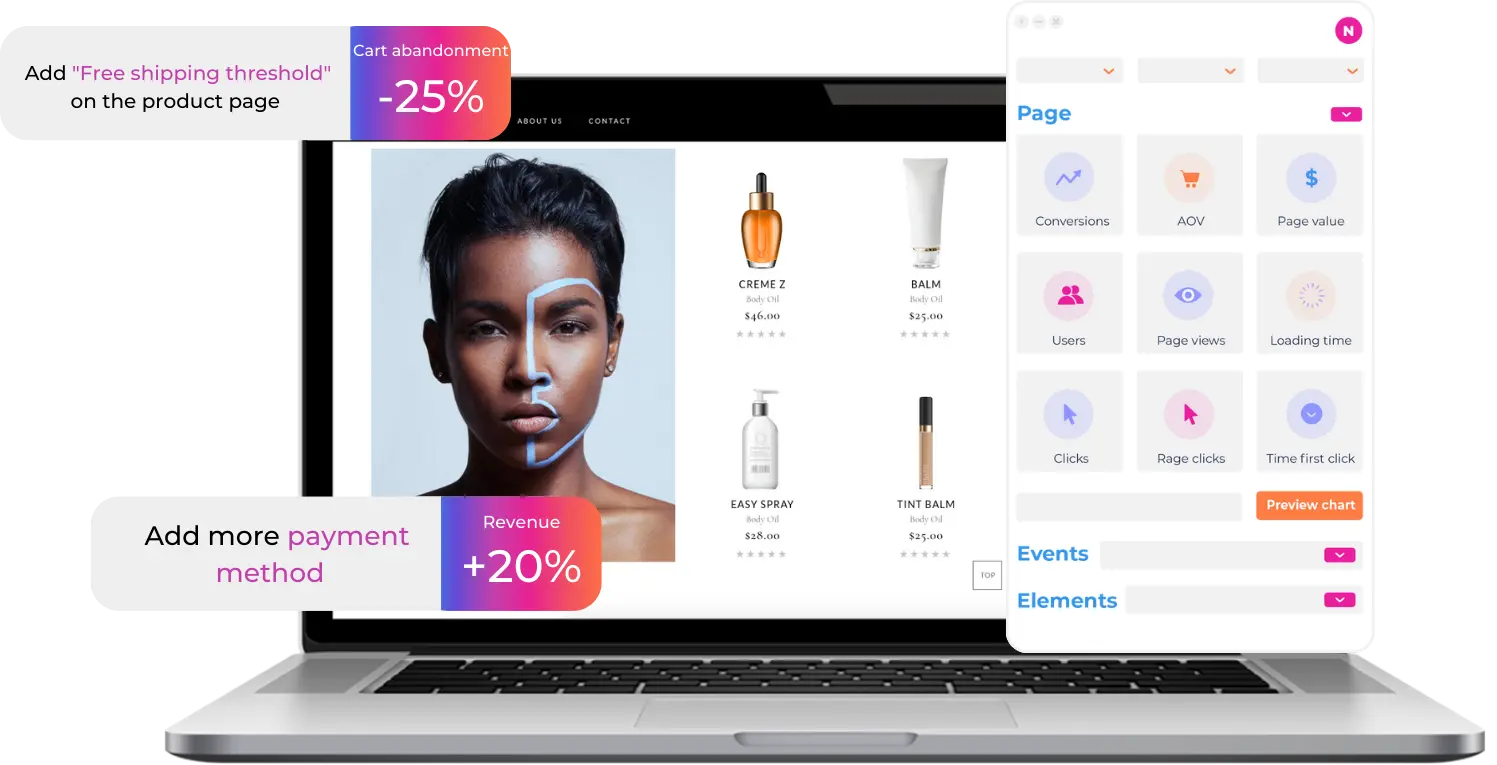Conversion Rate Optimization(CRO) 101
What is a Conversion Rate Optimization(CRO)?
Conversion Rate Optimization (CRO) is the process of increasing the percentage of website or app visitors who complete a desired action — whether that’s signing up for a newsletter, filling out a form, adding a product to cart, or making a purchase.
At its core, CRO focuses on:
- Improving user experience
- Removing friction points
- Enhancing digital interactions
- Driving measurable business growth
Unlike traditional marketing strategies that aim to increase traffic, CRO aims to get more value from the traffic you already have, maximizing ROI without necessarily increasing acquisition costs.
Why Conversion Rate Optimization Is Important
Let's face it, the digital landscape is competitive. Simply driving traffic to your website isn’t enough. What truly matters is what visitors do once they arrive. This is why Conversion Rate Optimization (CRO) becomes essential. CRO focuses on improving the percentage of visitors who complete a desired action — whether that’s making a purchase, signing up for a newsletter, or filling out a contact form.
Here are 4 main reasons why CRO is so important:
1. Increase revenue per visitor
Instead of spending more to attract additional traffic, you make the most of the users already coming to your site. Even small improvements in conversion rates can lead to substantial increases in sales and leads. Turning more casual browsers into paying customers.
2. Lower acquisition cost
CRO also lowers customer acquisition costs (CAC) by maximizing the value of your existing traffic. When your website converts better, each marketing dollar spent on SEO, paid ads, or content marketing goes further. You're not only getting more from your current efforts but also improving the overall efficiency of your marketing spend.
3. Understand user behavior
Through tools like A/B testing, heatmaps, and session recordings, businesses gain valuable insights into how users interact with their websites. This allows for data-driven decisions that align with actual user preferences and pain points, rather than assumptions.
4. Drive continous improvement
Unlike one-time marketing campaigns, optimization is an ongoing process. By consistently testing, learning, and refining your approach, you ensure that your website evolves with your audience’s needs and stays ahead of industry trends. Moreover, a well-optimized site delivers a better user experience, which builds trust, improves engagement, and encourages repeat visits. Whether you run an e-commerce store, a SaaS platform, or a content-based website, CRO empowers you to get more value from every visitor without constantly increasing your acquisition budget.
CRO is not just about short-term wins; it’s a long-term strategy that boosts profitability, deepens customer understanding, and supports scalable, sustainable business growth.
How to Calculate Your Conversion Rate
The formula for calculating conversion rate is simple:
For instance: If 450 visitors land on your pricing page and 18 convert, your conversion rate is:
This percentage reveals how proficiently your website transforms visitors into customers or achieves other intended actions. While industry benchmarks suggest average conversion rates fall between 1% and 4%, these numbers are not universal. Focus on understanding your own baseline and continuously improving it.
Global Conversion Enhancement
Defining the right conversion rate for your e-commerce business requires careful evaluation. Continuous monitoring and optimization are key for sustained success.
To boost your global conversion rate in the intricate landscape of e-commerce, focus on optimizing various micro conversions:
- Product Page Views to Add to Cart: Showcases early interest in products.
- Add to Cart to Initiate Checkout: Indicates strong purchase intent.
- Initiate Checkout to Complete Purchase: Converts visitors to customers.
- Newsletter Sign-ups: Nurtures leads through email marketing.
- Account Registrations: Enhances personalization and repeat purchases.
- Cross-sell and Upsell Conversions: Increases order value.
- Product Review Submissions: Builds trust and social proof.
- Social Media Engagement: Boosts brand visibility and loyalty.
- Wishlist Creations: Shows strong product interest.
- Referral Program Participation: Drives brand growth.
- Customer Account Updates: Reflects an ongoing relationship.
- Mobile App Downloads: Boosts mobile sales and user experiences.
- Subscription Box Sign-ups: Ensures recurring revenue and satisfaction.
- Customer Support Interactions: Increases loyalty and positive word-of-mouth.
- Abandoned Cart Recovery: Recovers revenue and reduces cart abandonment.
- Repeat Purchases: Highlights loyalty and satisfaction.
- Membership Sign-ups: Offers exclusive benefits and repeat purchases.
- Gift Card Purchases: Potentially leads to future sales.
- Product Customization: Enhances the overall customer experience.
Optimizing these micro-conversions can supercharge your e-commerce strategy, boost revenue, and enhance customer satisfaction, ultimately improving your global conversion rate.
⚙️ The CRO Process: A Step-by-Step Framework
A successful CRO strategy follows a structured, data-driven cycle:
-
Define Conversion Goals
- Identify what "success" looks like for each page.
- Examples: Newsletter signups, demo requests, purchases, downloads.
-
Analyze User Behavior
- Use tools like session replays, and funnel analysis to understand how users interact with your site.
-
Hypothesize Improvements
- Based on insights, develop testable hypotheses.
- Example: “Changing the headline will improve clarity and drive more clicks.”
-
Run Experiments
- Conduct A/B tests or multivariate tests to validate hypotheses.
- Test one variable at a time for accurate results.
-
Implement Winning Changes
- Roll out changes that show statistically significant improvements.
-
Iterate Continuously
- CRO is an ongoing process. Keep learning, testing, and refining.
Final Thoughts: CRO Is a Journey, Not a Destination
Conversion Rate Optimization is not a one-time fix — it’s a mindset. The most successful companies treat CRO as an ongoing discipline, driven by curiosity, data, and a deep commitment to understanding and serving their users.
By combining quantitative data with qualitative insights, running thoughtful experiments, and iterating based on results, you can unlock real growth and create better experiences for your customers.
So, whether you're just getting started or looking to refine your existing strategy, remember:
Every click tells a story. Every test teaches something valuable. Every optimization brings you closer to your goals. Start with small changes, test often, and keep improving — because when it comes to CRO, the journey never ends.
